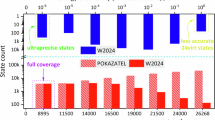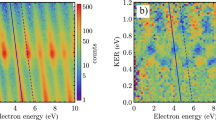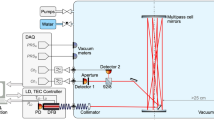Abstract
THE investigation of far infra-red stimulated emission sources at the National Physical Laboratory continues, and some results obtained using hydrogen cyanide and related molecules in pulsed electrical discharges are reported here. The interest attaching to these results is in the long wave-length of the emission and particularly its relation to the wave-length of water vapour absorption lines in the atmosphere.
This is a preview of subscription content, access via your institution
Access options
Subscribe to this journal
Receive 51 print issues and online access
$199.00 per year
only $3.90 per issue
Buy this article
- Purchase on SpringerLink
- Instant access to full article PDF
Prices may be subject to local taxes which are calculated during checkout
Similar content being viewed by others
References
Gebbie, H. A., Stone, N. W. B., Findlay, F. D., and Robb, J. A., Nature, 202, 169 (1964).
Gebbie, H. A., Phys. Rev., 107, 1194 (1957).
Yaroslavsky, N. G., and Stanevich, A. E., Optics and fipectroscopy, 7, 380 (1959).
Author information
Authors and Affiliations
Rights and permissions
About this article
Cite this article
GEBBIE, H., STONE, N. & FINDLAY, F. A Stimulated Emission Source at 0.34 Millimetre Wave-length. Nature 202, 685 (1964). https://doi.org/10.1038/202685a0
Issue date:
DOI: https://doi.org/10.1038/202685a0



